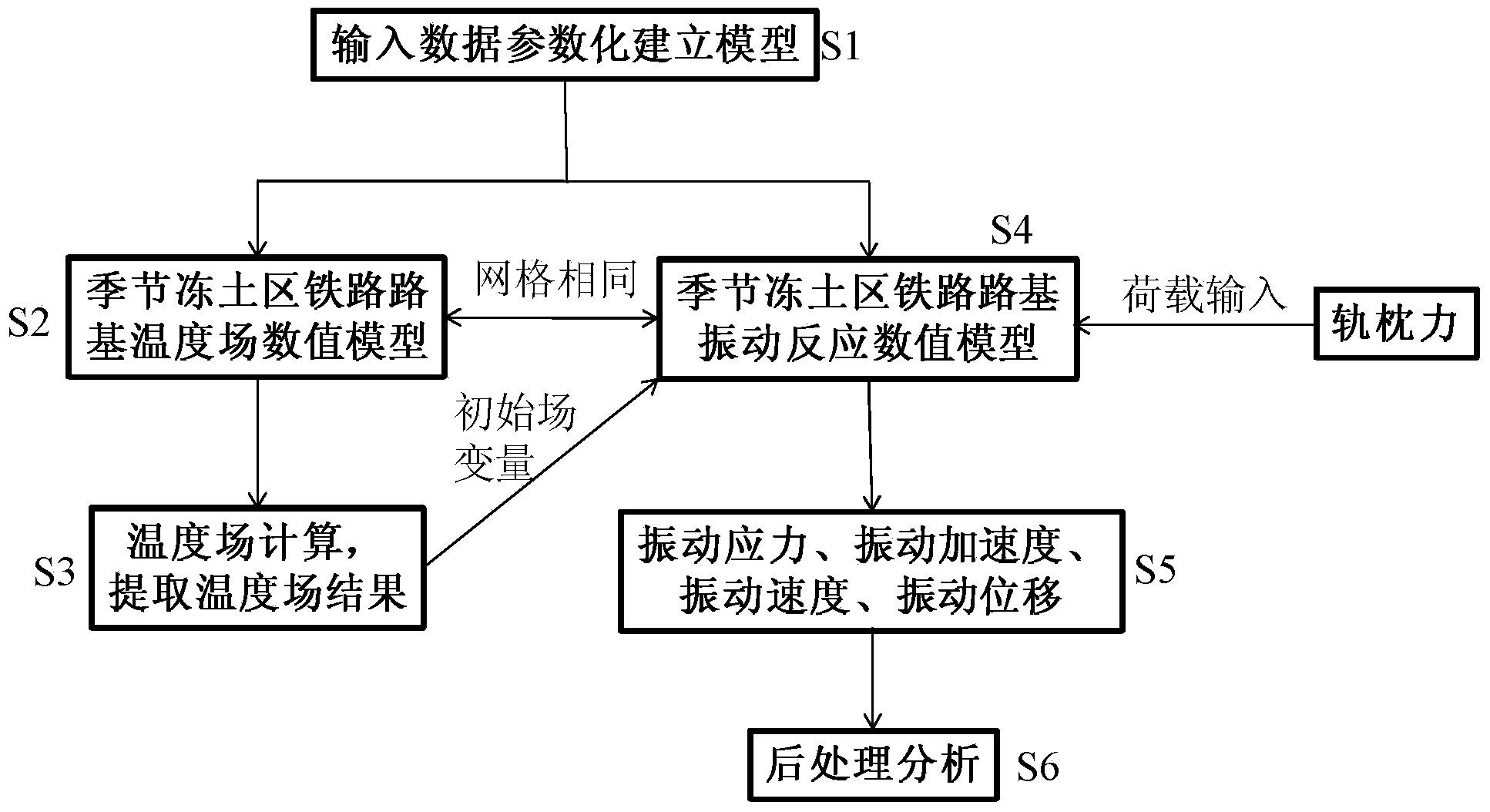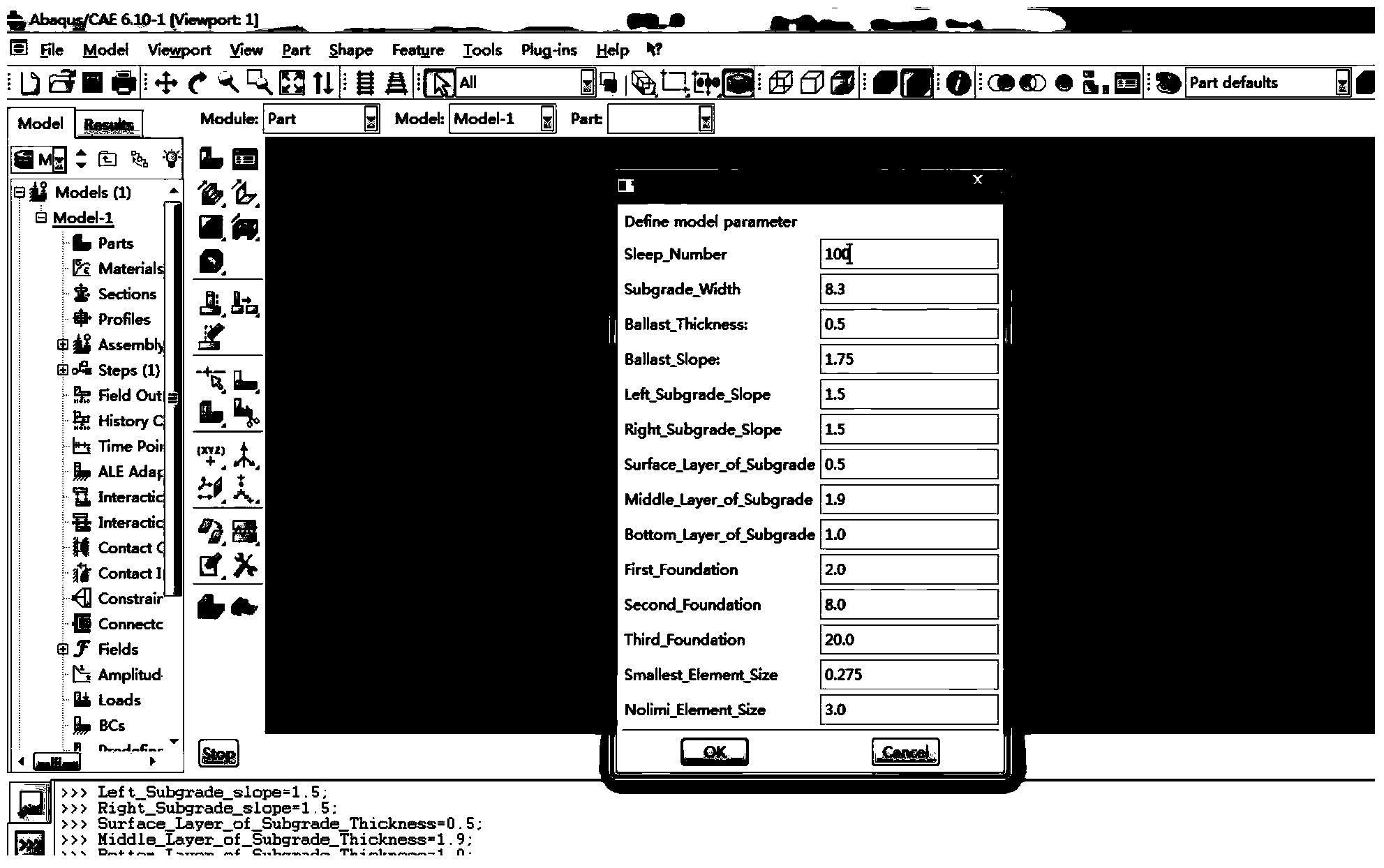Method for building vibration response three-dimensional numerical models of railway roadbeds in seasonally frozen ground regions in parameterized manner
A railway embankment and numerical model technology, applied in 3D modeling, image data processing, instruments, etc., can solve problems such as low efficiency and huge workload of manual modeling, and achieve the effect of avoiding blindness
- Summary
- Abstract
- Description
- Claims
- Application Information
AI Technical Summary
Problems solved by technology
Method used
Image
Examples
specific Embodiment approach 1
[0031] Specific implementation mode one: as Figure 1~6 As shown, a parameterized method for establishing a three-dimensional numerical model of the vibration response of the railway subgrade in the seasonally frozen soil area described in this embodiment is used to construct a numerical model in which the finite elements of the railway subgrade are regular hexahedral grid units and the boundaries are infinite elements. The implementation process of the method is as follows:
[0032] Step S1, determine the geometric dimensions of the railway embankment to be analyzed, perform parameterized settings to determine the geometric dimensions of the railway embankment, establish a three-dimensional geometric model of the railway embankment including sleepers, ballast beds, embankments, and sites, and perform a three-dimensional geometric model of the railway embankment The subdivision of to facilitate mesh division;
[0033] The parameters for setting the geometric dimensions of the...
PUM
 Login to View More
Login to View More Abstract
Description
Claims
Application Information
 Login to View More
Login to View More - R&D
- Intellectual Property
- Life Sciences
- Materials
- Tech Scout
- Unparalleled Data Quality
- Higher Quality Content
- 60% Fewer Hallucinations
Browse by: Latest US Patents, China's latest patents, Technical Efficacy Thesaurus, Application Domain, Technology Topic, Popular Technical Reports.
© 2025 PatSnap. All rights reserved.Legal|Privacy policy|Modern Slavery Act Transparency Statement|Sitemap|About US| Contact US: help@patsnap.com



